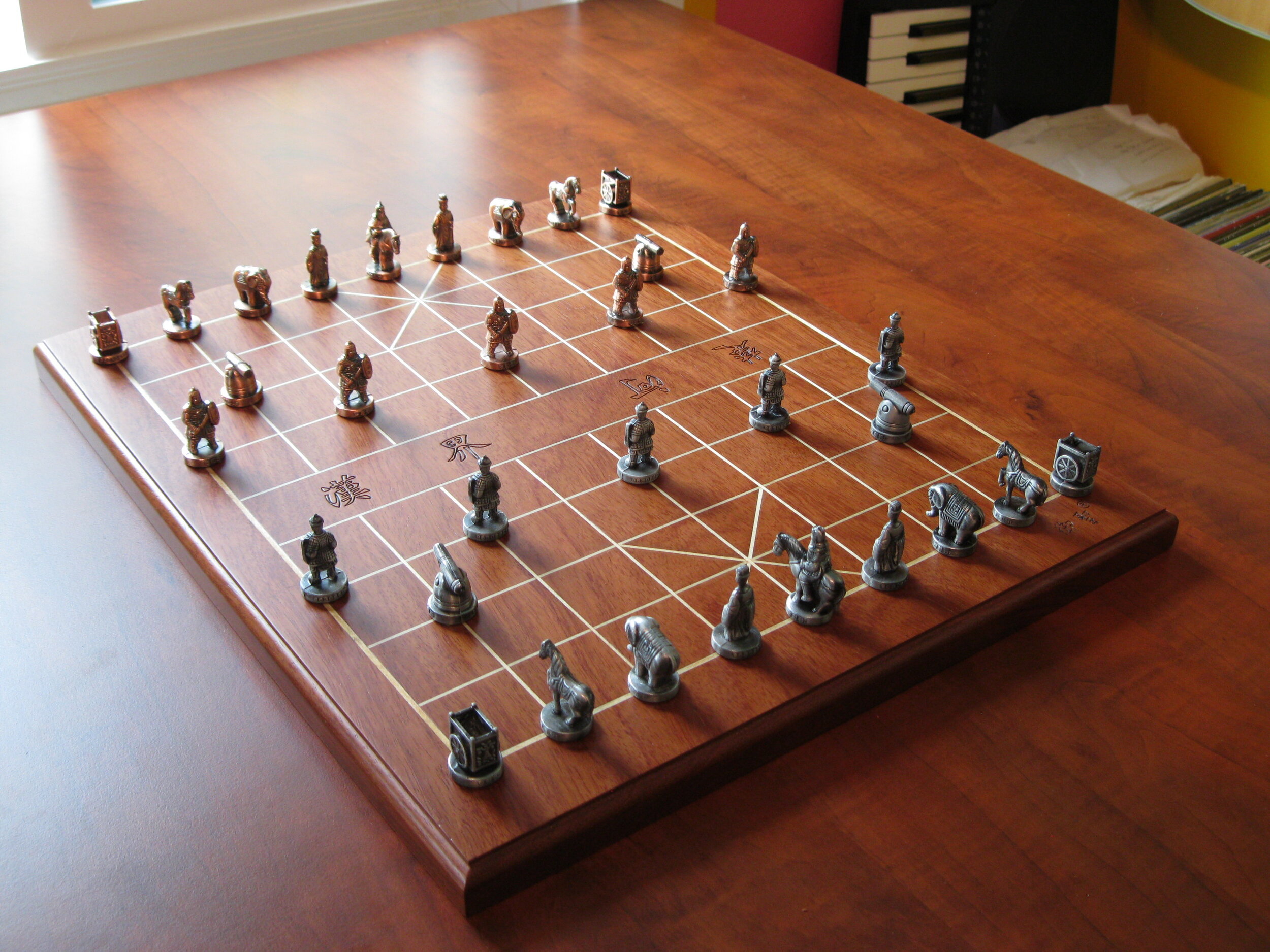Review of Tournament Formats in Xiangqi (Chinese Chess)
Author: Jim Png from XqInEnglish
This article would introduce the format of how Xiangqi tournaments are organized in China. It would be an introduction to the format that is used and the time controls et cetera. While some of the formats are similar or even the same as in tournaments that are used in International Chess, there are still subtle differences.
The format used in organizing tournaments can affect the way players prepare of it. It would be impossible to go into detail the formats of tournaments, how pairings are made, how the colors are determined, the tie-breaking measures et cetera in this article. For interested readers or potential tournament directors/organizing committees, please refer to the World Xiangqi Rules where recommendations are available.
Alternatively, the earlier editions of the Asian Xiangqi Federations Rulebook may be consulted.
The article will be discussed in the following sections:
Formats used in organizing the tournaments.
Types versus Needs
The mammoth Xiangqi population in China would mean that there are many different levels of players with different needs. Professional Xiangqi players make a living by playing competitively. Amateur players pursue the game more as a leisurely activity. Hence, the needs of professional and amateurs would be different and the tournaments that are held for professionals and amateurs would have different emphasis. An analogy would be soccer where there are local clubs and even regional teams. But to make it into the professional footballer’s league would be another different situation.
While most people play Xiangqi as a leisurely activity, the number of players who play it on a regular basis would still be astounding. Organizing tournaments to cater to the vast majority of Xiangqi players from different walks of lives and backgrounds would be a daunting task.
Types of Xiangqi Competition
There are many types of Xiangqi tournaments that are held in China and other parts of the world, in particular, South-east Asia. These tournaments cater to various purposes and also different levels and needs of Xiangqi players. For example, tournaments can be classified as:
· Tournaments for Men,
· Tournaments for Women,
· Tournaments for Different Age Groups,
· Individual Tournaments,
· Team Tournaments,
· Invitational Tournaments,
· Selection Tournaments,
· Scholastic Tournaments,
· Online tournaments… et cetera
All these types of Xiangqi competition be further divided into competition for professionals or amateurs, competition for men and women, competition for kids, competition for clubs et cetera. Sometimes, the distinction between a professional and an amateur can be blurry.
Photograph courtesy of Rick Knowlton.
Formats used in organizing the tournaments.
In a nutshell, there are four major formats that are used for the vast majority of Xiangqi competition: (1 页 4-9)
· Elimination Competition (淘汰赛)
· Round Robins (循环赛)
· Swiss System (积分编制赛)
· Mixed Format Systems (混合制)
The format of the tournament is decided and announced before registration for the tournament so that the competitors would know that they would be expecting.
Elimination Competition (淘汰赛)
This tournament format would usually cater to tournaments whereby the number of players is huge and that the event had to be completed within a relative short time frame. It is usually employed for the masses. It utilizes the knockout format whereby only the winner advances to the next round of competition and the loser would be eliminated.
|
Advantages |
Disadvantages |
|
· Ability to accommodate a large number of competitors in a small time frame. · Competition would be exciting and there would be a climax that is built up towards the end of the tournament. · There is little to no chance of external interference on the matches. · Randomness to decrease the possibility of cheating. |
· Eliminated competitors would have limited time in participation. · The Strength of the players cannot be accurately assessed. |
To better reflect the strength of the players, in some elimination formats, the players are seeded as an extra measure. Sometimes lots are drawn. All these extra stipulations would be announced before hand.
The elimination format is further divided into several formats:
· Single Elimination Format (单淘汰塞)
· Double Elimination Format (双淘汰赛)
· Other types of Elimination Format (其他淘汰制)
Double Elimination Formats and other types of elimination formats are relatively rare in Xiangqi competition and will not be discussed in this article. For more on double elimination formats, please refer to the relevant article on Wikipedia.
Single Elimination Format
This format would be the simplest and most-straightforward. Usually, lots are drawn by the competitors where by a competition number is assigned to each player. Winners of each round would advance in the bracket until a winner is decided. Theoretically, the number of competitors would be halved for each round of competition.
In the instance of the number of players being an odd number, or that the organizing committee had decided to seed players, special stipulations would be mentioned beforehand and the relevant changes or adaptations would be made.
Usually, the winner and first runner-up is decided in such tournaments.
Additional matches may be arranged to decide the 3rd, 4th, 5th, 6th, 7th and 8th places et cetera.
The number of games played per round may be one or two matches. Determination of what color to play would be announced by the organizing committee during registration. Tie-breaking measures would also be announced by the organizing committee before the competition.
Round Robins (循环赛)
Round robins are another commonly used format in Xiangqi. They can be further divided into two further formats that are commonly used: the All-play-All Format and the Grouped Round Robin Formats.
All-play-all (大循环制)
Each competitor would play against all other entrants in the tournament. One or two games is played per round and the rankings can be decided. Such competitions would theoretically reflect the strength of the competitors most accurately, but it would take a long time to hold tournaments using this format. That is why it would be suitable for tournaments with a number of participants or teams.
Grouped Round Robins (分组循环制)
This format is often used in tournaments that are broken down into two or more different stages. In one of the stages, the competitors are divided into different groups according to the number of players and each player/team in the group would play against all other players/teams in the same group until a winner is decided. Seeded players/teams can be added to each group to try to reflect the strength of the players/teams better.
Usually, the Grouped Round Robin Format is used in the early stages of competition whereby winners of the groups are eligible for the next lag of the competition which may use other formats as mentioned in this article. Please also refer to the Mixed Format Systems below.
Swiss System (积分编制赛)
The Swiss System is a popular format that is employed in many tournaments whereby there is time constraint and seeded players. The players/teams would not play all the other players/teams as in a round robin. Instead, the opponent for the next round is decided based on the points accumulated, color, et cetera. The competitors/teams can only meet each other once in the tournament. Unlike other formats where the tournament brackets can be arranged before-hand, the pairings for the next round can only be decided after the previous round had finished. The least number of rounds is recommended to be seven to ensure that the strength of the players can be reflected.
Photography courtesy of Rick Knowlton.
Mixed Format Systems (混合制)
Mixed Format Systems are often seen in Xiangqi tournaments in China and internationally. The entire tournament is divided into different legs and a specified format would be used for that leg of the tournament. Winners of the first leg of the tournament would then be eligible for the next leg.
The most common Mixed Format Systems include:
· Grouped Round Robins for the initial stage(s) followed by Elimination Format, and
· Initial Elimination Format followed by a Round Robin (All-play-All).
The latter is usually seen in local tournaments where there is a large number of competitors and also for selection tournaments whereby players are selected to represent a region in higher tournaments.
Works Cited
1. 刘殿中 和 齐津安. 象棋新编课程 象棋实战指南. 北京 : 北京体育大学出版社, 2004. 7-81051-904-2/G.755.



